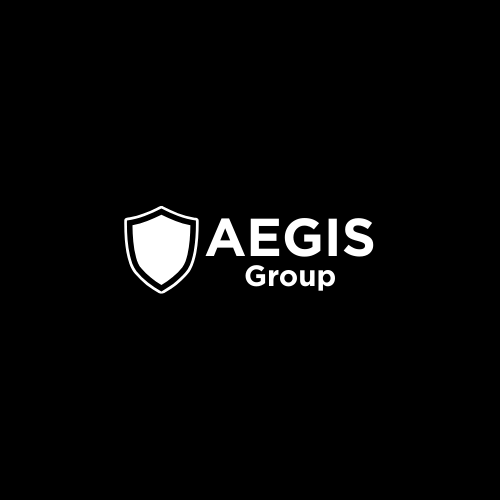Low-code & no-code
development services

What AEGIS offers as part of low-code development services

PoC development
As part of our low-code development services, we speed-test and validate your business ideas, test core application functionalities without heavy coding, and collect technology solution requirements to guide future development activities.

Interactive prototyping
Use our low-code and no-code development services to create clickable, responsive prototypes that feel like real applications! Going this route helps test user flows, gather meaningful feedback, and modify designs based on user interactions.

User testing-ready app development
With our low-code development services, you can turn MVPs into more advanced applications that can be tested with a larger audience. This allows you to collect real-world data on the app’s usability, functionality, and performance, identifying bottlenecks and areas for improvement.

MVP development
We create low-code MVP solutions by combining our full-stack software engineering and MVP development expertise. When doing so, we focus on the core application features that solve your target audience’s problems, delivering products ready for market testing and early user acquisition.
Types of low-code solutions we create

Cross-platform mobile applications
Aside from native and classic cross-platform mobile app development, AEGIS assists clients in developing low-code solutions using FlutterFlow. We use the application builder’s pre-built widgets, templates, and back-end integration tools to create fully functional cross-platform mobile applications, laying the groundwork for custom development.

Web applications
AEGIS will assist you in developing no-code and low-code web solutions based on Retool and Bubble.io. The former is the ideal low-code development solution for internal applications and business tools that require data integration and manipulation. The latter enables us to develop complex, customer-facing web applications, such as marketplaces and SaaS solutions, with minimal hand-coding.

Workflow automation solutions
Our intelligent process automation offering includes AirOps-powered low-code workflow automation solutions. Using the platform’s drag-and-drop development interface, pre-built integrations with services like Google Workspace and Slack, conditional logic, and reporting capabilities, AEGIS designs custom workflows that scale with your business.
How we create low-code & no-code solutions
- We validate your idea's technical feasibility and gather preliminary requirements
- We select no-code or low-code development solutions that best meet your needs
- We rapidly develop a low-code solution, refining the product iteratively
- We design the application’s navigation logic and user interface with usability and efficiency in mind
- We implement basic functionality, closely adhering to the requirements list
- We proceed to enable your application’s core features
- We test the low-code solution with real users and collect feedback for targeted improvements
- We fine-tune low-code solutions based on user and stakeholder feedback, resulting in a market-ready solution
Why collaborate with our low-code company?
Faster project execution
By using AEGIS low-code development services, you can go from idea to a testable prototype and from an MVP to a pilot app within weeks instead of months.
Flexibility
Cost efficiency
With low-code development solutions, we can reduce software engineering time by up to 50% compared to traditional coding tools without compromising on the application’s reliability and performance.
Risk reduction
FAQs
In traditional software development, code is written manually. Even though software engineers can use pre-built frameworks, libraries, and coding assistants, traditional software engineering still necessitates a thorough understanding of software development principles, algorithms, and data structures. While traditional development provides maximum flexibility and customization, it is slow due to the complexity and amount of code that must be written, tested, and debugged, which incurs higher costs. If you want to build complex, high-performance enterprise solutions, we recommend sticking with the traditional approach.
No-code and low-code development tools provide visual environments with drag-and-drop interfaces and pre-configured components, templates, and integrations. Such tools eliminate the need for manual coding and significantly accelerate the development process while lowering associated costs. While no-code and low-code solutions require basic to moderate programming skills, you will still need a solid understanding of software design principles and requirements analysis to get started. That’s why we recommend teaming up with a low-code company for your PoC, prototype, MVP, or pilot app development project.
Our low-code company adheres to a rigorous development process that includes extensive testing at each stage. Our expert team performs functional, usability, and performance testing to ensure that the applications meet high quality and reliability standards.
Development time varies depending on the complexity of the application. However, low-code and no-code solutions significantly shorten the development cycle, allowing us to deliver functional prototypes and MVPs in weeks rather than months.
The cost of creating software solutions using no-code and low-code development tools varies greatly depending on the type of application you seek to build, its feature set, target audience, and anticipated usage scenarios. For example, a simple mobile application with Uber-like ride booking functionality could be created using FlutterFlow, Firebase, and Clerk over the course of six weeks and cost around $30,000. A customer support application with an OpenAI-based chatbot inside would cost you $25,000. More complex solutions, such as an appointment scheduling portal for a healthcare provider or a medium-sized Magento online store with a decoupled architecture, would necessitate a larger investment—roughly $35,000 and $51,000, respectively. For a more accurate low-code development cost estimate, please contact ITRex and provide more information about your project.
Absolutely. Low-code and no-code development tools allow for creating apps that scale along with your business. As your company grows, we can easily add new features, integrate additional services, and handle increased user loads without major overhauls. And should the need arise, we’ll help you port the functionality of your low-code solution to a custom technology stack.
We prioritize data privacy and compliance with all applicable regulations, including GDPR, CCPA, and HIPAA. Secure data handling, regular compliance checks, and adherence to industry standards are the cornerstones of our low-code development services.
